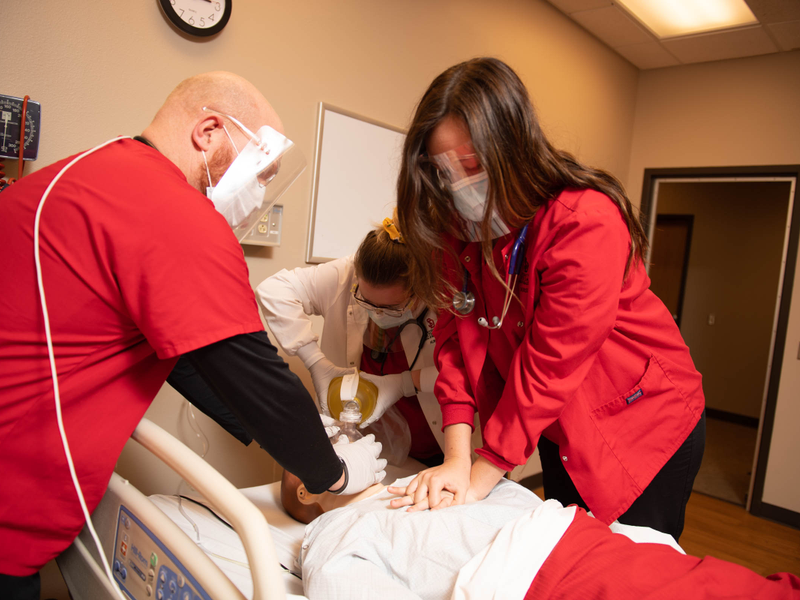USD-Rapid City Prepares the Next Generation of Nurses for the Black Hills community
Nurses are some of our most highly respected professionals for their skills, knowledge and commitment to patient care. Their place at the frontline of health care is vital, yet the nation faces a shortage of registered nurses even as the need intensifies.
At the University of South Dakota (USD) - Rapid City, the nursing program is committed to producing the next generation of nurses through a unique interprofessional model that teaches students not only how to care for patients with diverse needs but how to work as a team with other medical professionals.
“Our nursing program is part of the School of Health Sciences so it really is part of something much bigger,” Dr. Anne Pithan, chair of the USD nursing department, said. “The School of Health Sciences has 10 programs alone and is under the same umbrella as the USD Sanford School of Medicine. The School of Health Sciences programs include addiction counseling and prevention, dental hygiene, medical laboratory science, nursing, occupational therapy, physical therapy, physician assistant, public health, health science studies and social work. It’s exciting to be part of a big interdepartmental, interprofessional effort that influences healthcare. It really prepares our graduates to work well with all those disciplines.”
This interactive learning model enhances communication and collaboration and helps prepare students for a real world of increasing interconnectedness, she said.
“The purpose is to know that in health care, we are never alone,” Dr. Pithan said. “It’s always a team."
The year of the nurse
The year 2020, designated as the Year of the Nurse by the World Health Assembly to mark the 200th anniversary of the birth of Florence Nightingale, also was marked by the global crisis of COVID-19.
Even in the face of the pandemic, USD-Rapid City continued its mission to train future nurses to work in a complex industry — all while adapting to the challenges of virtual learning. Students resumed hands-on training as quickly and safely as possible.
“We recognize this was an incredibly difficult time for our students,” Dr. Pithan said. “We worked really hard to adapt and we’ve had to be creative. This was a challenging and uncertain time for both nurses and students and we helped them recognize the impact of nurses and how nurses step up into challenges to help others. We worked closely with our practice partners and we got our students back into clinical [experiences] as quickly as we could.”
Real-life experience
Real-life experience is essential in educating nurses who are “practice ready,” she said. Studies suggest the demand for nurses will continue to grow over the next few years, especially in the South and West. But USD-Rapid City students will be ready.
“There are just so many job possibilities,” Dr. Pithan said. “We talk to students about how life-changing the profession is. It really has an ability to impact people’s life across the lifespan, from the beginning of life to the end.”
Faculty are committed to creating top-notch practitioners who can hit the ground running when they graduate. In fact, the average pass rate for USD-Rapid City students in their licensure exams is 97 percent (the average nationally is 86 percent.) And more than 82 percent of recent nursing graduates took their first RN job in the Rapid City/Black Hills area.
Committed to community
Dr. Pithan believes that commitment to community grows out of the school’s efforts to connect students with their neighbors through service projects, whether preparing and serving food to the homeless, raising money for cancer patients or sewing ostomy cover bags.
“We’re really committed to meeting the health care needs and the workforce needs of South Dakota,” Dr. Pithan said. “Our vision is that we develop transformational progressive leaders who will advance a culture of professional, skillful and compassionate care. And we believe that’s what we deliver.”

